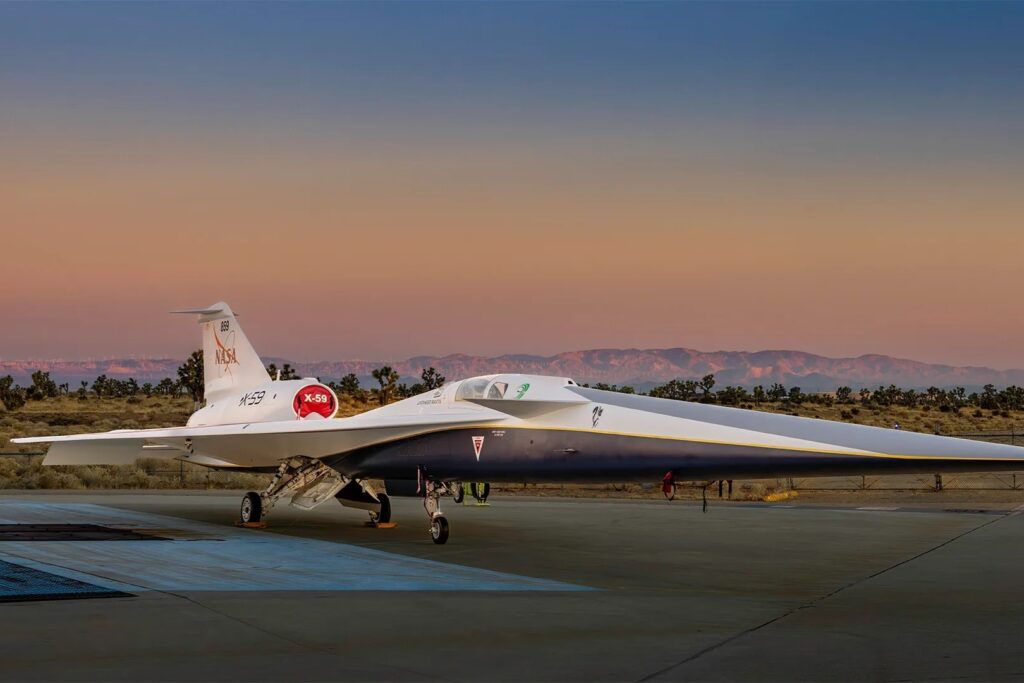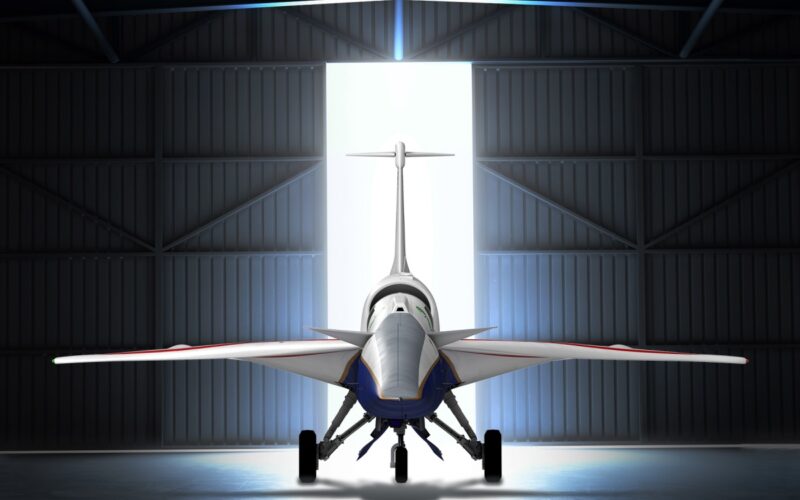NASA and Lockheed Martin have introduced the X-59, a supersonic aircraft designed to break the sound barrier without causing the typical loud sonic boom.
The 30-meter-long, 10-meter-wingspan aircraft was officially presented at Lockheed Martin’s legendary Skunk Works site in Palmdale, California. The X-59 will be capable of reaching speeds of 1.4 times the speed of sound, approximately 1,500 kilometers per hour.
“This is a major accomplishment made possible only through the hard work and ingenuity from NASA and the entire X-59 team,” commented NASA Deputy Administrator Pam Melroy. “NASA’s X-59 will help change the way we travel, bringing us closer together in much less time.”

One notable feature of the X-59 is its unique cockpit placement, located halfway up the fuselage, with the pilot relying on a series of cameras to see what’s happening at the front of the plane. This innovative design aims to reduce the noise impact on the ground, making it quieter than traditional supersonic aircraft. The noise felt on the ground when the technology demonstrator passes at supersonic speed should not exceed 75 dB in theory.
The maiden flight of the X-59 is slated for 2024. After an initial series of test flights, the X-59 will fly over various US cities to assess the noise it produces and how it is perceived by the public. The goal is to gather data to support the use of this technology in commercial aviation.
Fostering a new era of supersonic travel
Lockheed Martin has developed the X-59, an experimental aircraft, in collaboration with NASA as part of the Quiet SuperSonic Technology (QueSST) program. The primary objective of this aircraft is to achieve supersonic speeds while generating a subdued sonic thump or boom, adhering to the noise standards required for overland flight.
At present, regulations in the United States prohibit flights over land at speeds surpassing Mach 1 (1,234 kilometers per hour or 767 miles per hour) without explicit authorization from the Federal Aviation Administration.
The challenge of excessive noise significantly constrained the Concorde, restricting its supersonic operations to transatlantic routes and preventing it from flying over US and European airspace. The last supersonic passenger flight occurred over two decades ago with a British Airways Concorde flight from New York’s JFK to London Heathrow on November 26, 2003.
“NASA will share the data and technology we generate from this one-of-a-kind mission with regulators and with industry,” explained Bob Pearce, associate administrator for aeronautics research at NASA Headquarters in Washington. “By demonstrating the possibility of quiet commercial supersonic travel over land, we seek to open new commercial markets for U.S. companies and benefit travelers around the world.”
On March 30, 2020, the FAA published a Notice of Proposed Rulemaking (NPRM) regarding noise standards of supersonic airplanes during landing and takeoff. The new regulation would see the adoption of an additional noise category specifically for supersonic airplanes.

